ASTANA – Abilkhan Kasteev, a towering artist of his generation and the master of social realism who stood at the foundations of Kazakh fine arts, celebrates 120 years on Jan. 14.
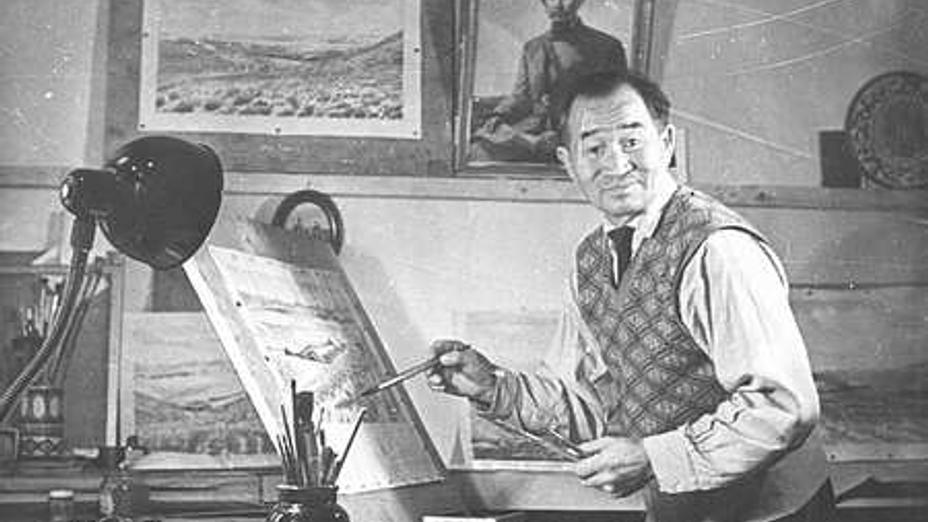
Abilkhan Kasteev. Photo credit: qazaqstan.tv
His carefully constructed and richly hued paintings often told the story of ordinary Kazakh people at the intersection of the nomadic heritage and the social dynamics in the Soviet Union. In the landscape series, he explored the world around him in all its beauty and oddity.
Kasteev’s early years and works
Kasteev was born in 1904 in the village of Chizhin in the Almaty Region. The son of a shepherd, much of his childhood was spent walking the cattle and observing nature which encouraged the boy’s desire to create. He carved various crafts and made jewelry from wood and bones. Typical of the Kazakh-Muslim community of his generation, the drawing of people was prohibited, so his talent was condemned in the auyl (village in Kazakh).

“Young Abai,” 1945. Photo credit: arthive.com
In 1927, at the age of 23, Kasteev worked in the Turksib (Turkistan-Siberia) railway construction. That is when his fondness for drawing was noticed by the construction management and the talented guy was sent to study in Almaty at an ordinary school.
While studying in Almaty, Kasteev came under the influence of an inspirational art master, realist painter Nikolai Khludov. It was a massive stroke of good fortune for Kasteev. With Khludov’s encouragement, he flourished, learning skills of painting, working with paints and canvases and getting acquainted with the works of the classics.
He had his first taste of fame during those years with canvases called “Yurt Interior” (1929), “To School” (1930), “Portrait of S. Kusykbaev” (1930) and “Turksib” (1932).
The artist turned to the theme of the construction of the Turksib many times, starting from the time of his work at the construction site. The later version of the “Turksib” painting (1969) depicts a group of horsemen and women in the foreground watching the approaching railroad train from the mountain. It embodies the meeting of the old and the new in the life of Kazakhs. Without depicting a single face, the artist reflected people’s delight at the new phenomenon in their lives.
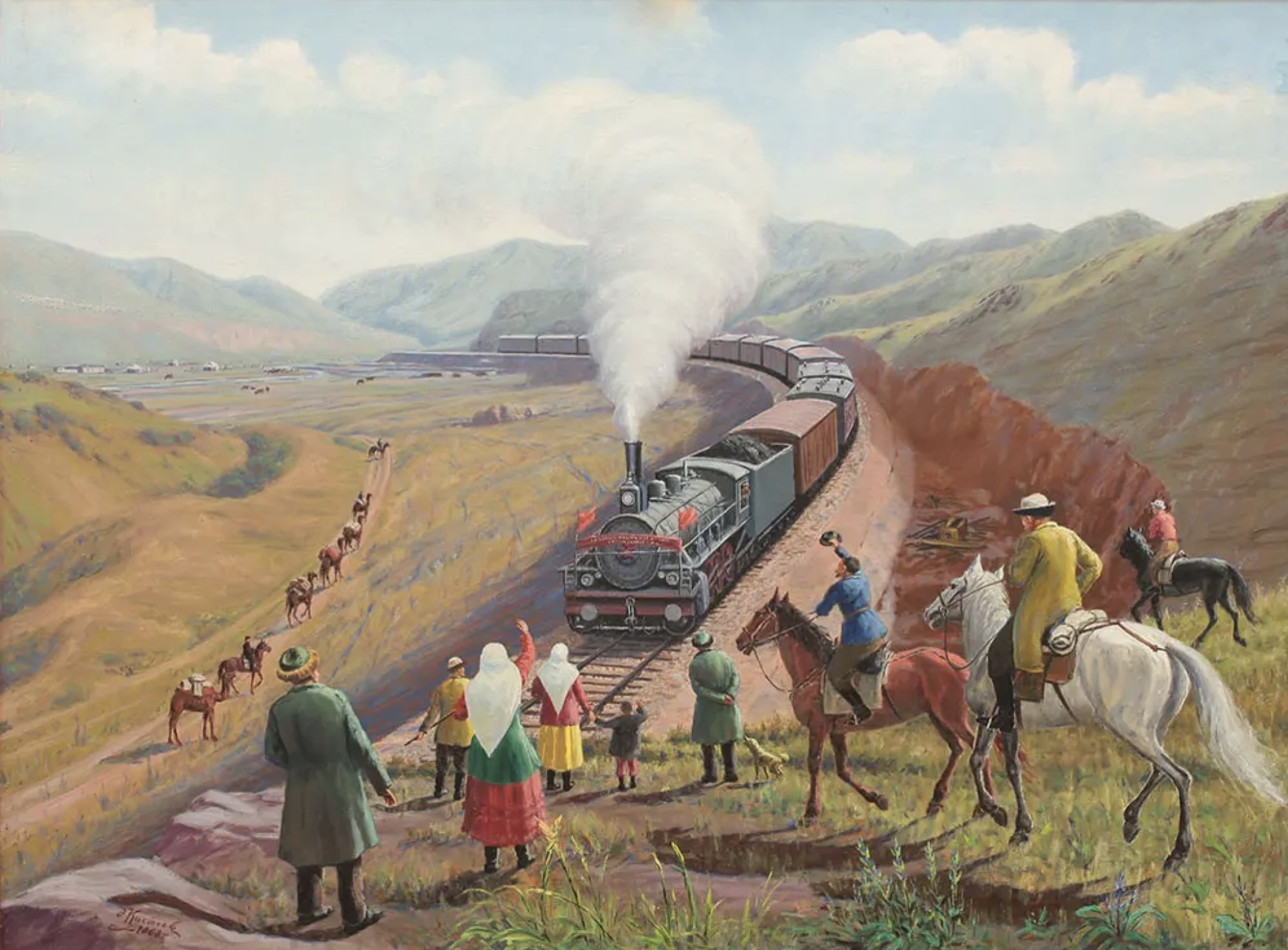
“Turksib” 1969. Photo credit: arthive.com
In the competition for best painting dedicated to the Kazakh poet Abai Kunanbaiuly in 1943, Kasteev was awarded a diploma, a result that helped to propel him into applying to study art in Moscow. His dedication to art won him a place at the Krupskaya evening art studio, where he studied for three years.
Kasteev first exhibited his paintings publicly in 1942.
Kasteev’s oeuvre
Kasteev’s works were the product of the Soviet era when a traditional nomadic lifestyle was fundamentally changed by the elements of Soviet power. His artwork can be rightfully called an artistic chronicle of Soviet Kazakhstan, reflecting the historical events that took place in the country in the 20th century, radically transforming the traditional way of life of the formerly nomadic people.
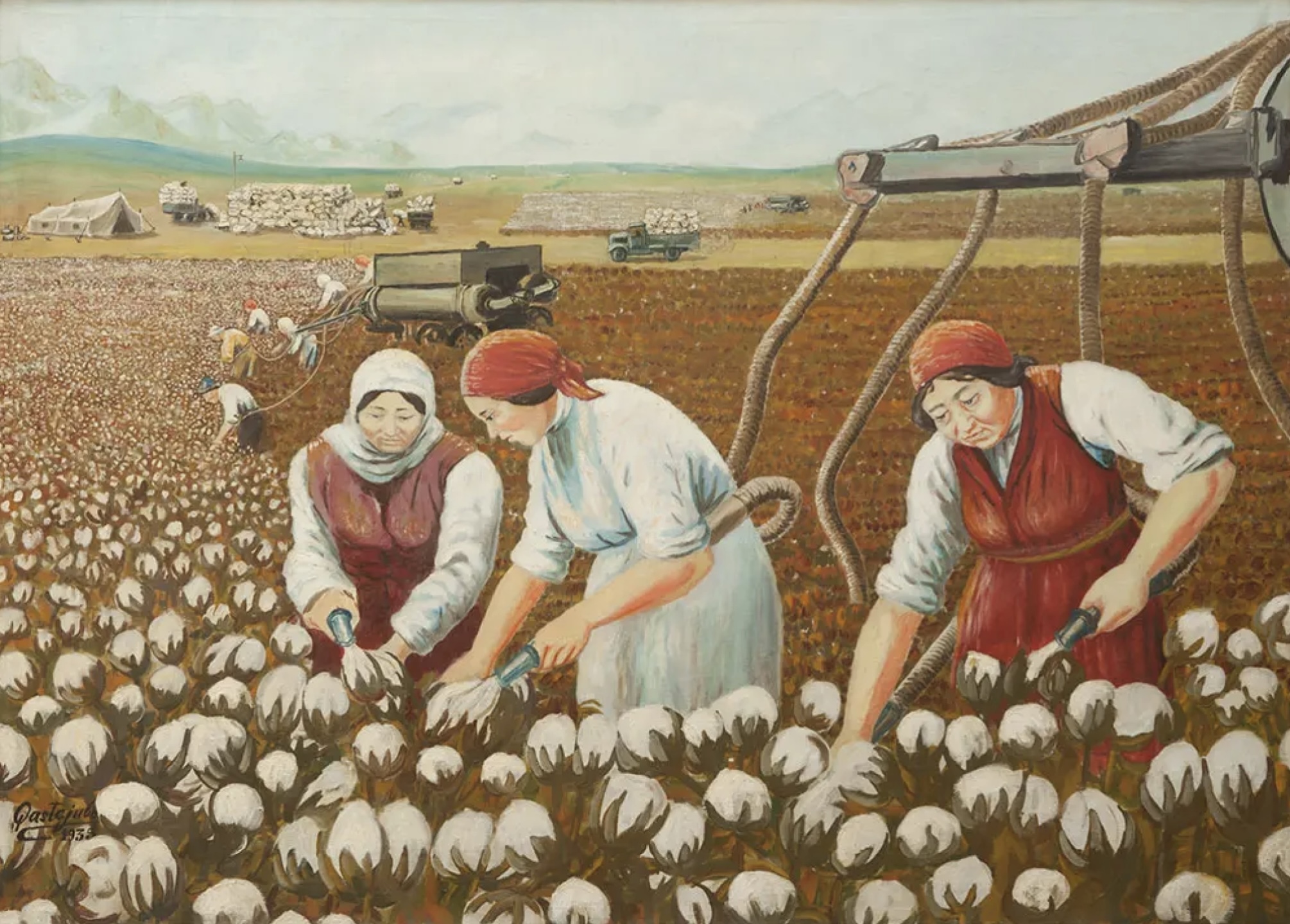
“Picking Cotton,” 1935. Photo credit: arthive.com
An aesthetic of Soviet life, usually applied to his work, depicts social changes in Kazakhs’ everyday life, such as the migration of auyls, traditional games and customs, the emergence of radio and gramophone and a widely known realistic painting of this period, “Picking Cotton.”
“Today, Abilkhan Kasteev’s works can be considered as important ethnographic material, as it has always been important for the artist to preserve the authenticity of facts and closeness to nature. By meticulously detailing and accurately documenting every aspect of the objects, Kasteev makes them a subject of study for those interested in Kazakh culture and daily life.” This was the assessment the anthropology and ethnology researcher at the Central State Museum Beibitkali Kakabayev made in his 2017 article on sociocultural and ethnographic aspects of Kasteev’s creativity.
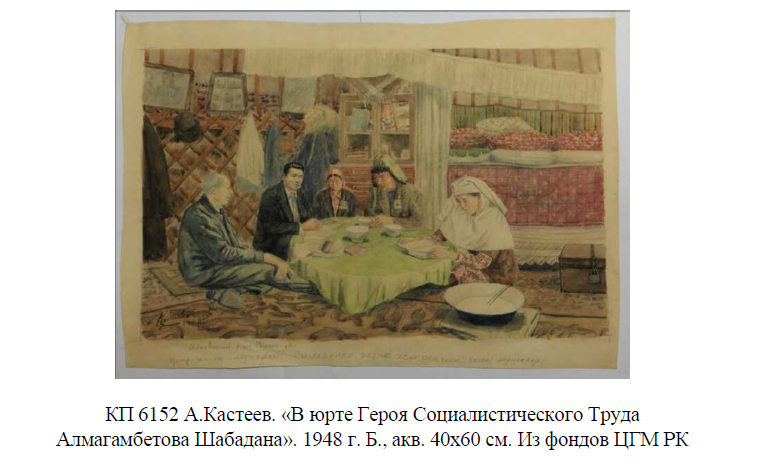
“In the Yurt of Hero of Socialist Labor Almagambetov Shabadan,” 1948. Photo credit: articlekz.com
“By meticulously detailing and accurately documenting every aspect of the objects, Kasteev makes them a subject of study for those interested in Kazakh culture and daily life. Therefore, we can say that the works of the artist are a kind of ‘visual text’ telling about the ethnography of the people, and the artist himself appears not only as a carrier of cultural tradition but also as an ethnographer, skillfully working in the field with primary material,” he wrote.
He singled out Kasteev’s “In the Yurt of Hero of Socialist Labor Almagambetov Shabadan,” painted in 1948, notably for depicting a typical yurt interior common in rural areas in the 1940s-50s.
“Despite a number of innovations inherent in the mid-20th century (framed paintings, portraits, household items, etc.), the interior retains the traditional order of things and the division of interior space into male and female halves,” wrote Kakabayev.
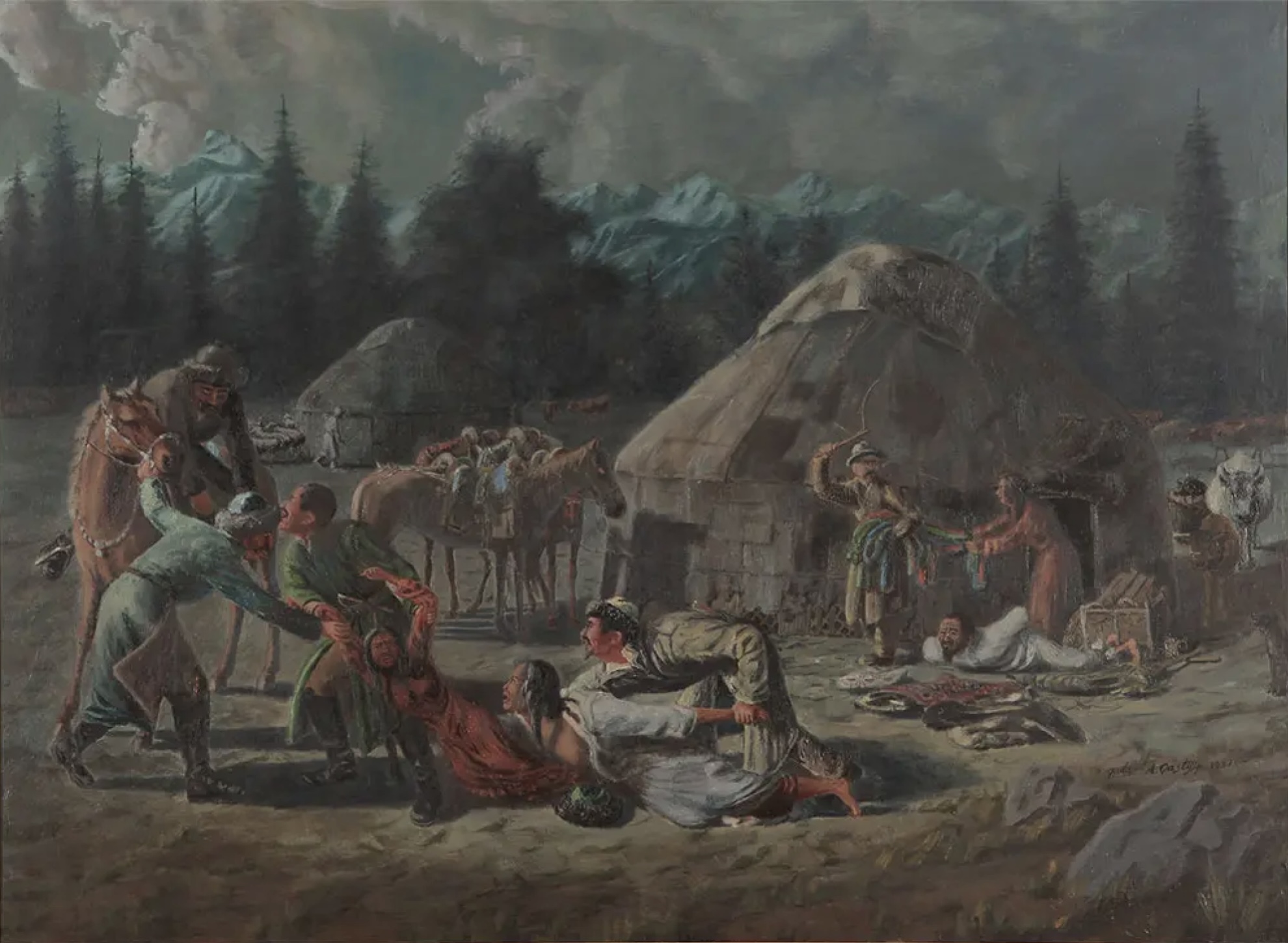
“Girl Abduction,” 1937. Photo credit: arthive.com
One of Kasteev’s early works from 1937 shows how a young woman is forcibly taken away to marry someone. The piece titled “Girl Abduction” reveals Kasteev’s protest against the infringement of women’s rights. The dark landscape against the background emphasizes the tragedy of the scene.
Kasteev also paid tribute to landscape paintings with a series of works dedicated to capturing the beauty of the Almaty Region’s scenery. “Alpine Skating Rink Medeo” is one of the most well-known paintings that depict the mountain pearl that is the Medeo skating rink.
Portraits
The lifetime achievement of Kasteev is the creation of portraits of notable Kazakh public figures, including ethnographer Shokan Valikhanov, poet Zhambyl Zhabayev, revolutionary Amangeldy Imanov and poet Abai Kunanbaiuly.

“Amangeldy Imanov,” 1950. Photo credit: arthive.com
In 1944, Kasteev received the title of People’s Artist of the Kazakh Soviet Socialist Republic (SSR) for being the first person in the country to recreate the picture of Imanov.
But it was his series of paintings of Abai that generated discussion across the Kazakh art community. Kasteev created around 30 works dedicated to Abai. The image of the young Abai, created in 1945, which depicts the poet reading and refining his ideas, stands out most.
The artist passed away in 1973, leaving behind a substantial creative legacy of over 1,100 works. The State Museum of Arts in Almaty, which has been carrying the artist’s name since 1984, has the largest collection of his works. His paintings can also be found in many museums and private collections in Kazakhstan and abroad.

